�
Operating Systems
Principles & Practice
Volume I: Kernels and Processes
Second Edition
Thomas Anderson
University of Washington
Mike Dahlin
University of Texas and Google
Recursive Books
recursivebooks.com
Operating Systems: Principles and Practice (Second Edition) Volume I:
Kernels and Processes by Thomas Anderson and Michael Dahlin
Copyright ©Thomas Anderson and Michael Dahlin, 2011-2015.
ISBN 978-0-9856735-3-6
Publisher: Recursive Books, Ltd., http://recursivebooks.com/
Cover: Reflection Lake, Mt. Rainier
Cover design: Cameron Neat
Illustrations: Cameron Neat
Copy editors: Sandy Kaplan, Whitney Schmidt
Ebook design: Robin Briggs
Web design: Adam Anderson
SUGGESTIONS, COMMENTS, and ERRORS. We welcome suggestions,
comments and error reports, by email to suggestions@recursivebooks.com
Notice of rights. All rights reserved. No part of this book may be reproduced,
stored in a retrieval system, or transmitted in any form by any means —
electronic, mechanical, photocopying, recording, or otherwise — without the
prior written permission of the publisher. For information on getting
permissions for reprints and excerpts, contact
permissions@recursivebooks.com
Notice of liability. The information in this book is distributed on an “As Is"
basis, without warranty. Neither the authors nor Recursive Books shall have
any liability to any person or entity with respect to any loss or damage caused
or alleged to be caused directly or indirectly by the information or
instructions contained in this book or by the computer software and hardware
products described in it.
Trademarks: Throughout this book trademarked names are used. Rather than
put a trademark symbol in every occurrence of a trademarked name, we state
we are using the names only in an editorial fashion and to the benefit of the
trademark owner with no intention of infringement of the trademark. All
trademarks or service marks are the property of their respective owners.
�
To Robin, Sandra, Katya, and Adam
Tom Anderson
To Marla, Kelly, and Keith
Mike Dahlin
�
Contents
Preface
I Kernels and Processes
1 Introduction
1.1 What Is An Operating System?
1.1.1 Resource Sharing: Operating System as Referee
1.1.2 Masking Limitations: Operating System as Illusionist
1.1.3 Providing Common Services: Operating System as Glue
1.1.4 Operating System Design Patterns
1.2 Operating System Evaluation
1.2.1 Reliability and Availability
1.2.2 Security
1.2.3 Portability
1.2.4 Performance
1.2.5 Adoption
1.2.6 Design Tradeoffs
1.3 Operating Systems: Past, Present, and Future
1.3.1 Impact of Technology Trends
1.3.2 Early Operating Systems
1.3.3 Multi-User Operating Systems
1.3.4 Time-Sharing Operating Systems
1.3.5 Modern Operating Systems
1.3.6 Future Operating Systems
�
Exercises
2 The Kernel Abstraction
2.1 The Process Abstraction
2.2 Dual-Mode Operation
2.2.1 Privileged Instructions
2.2.2 Memory Protection
2.2.3 Timer Interrupts
2.3 Types of Mode Transfer
2.3.1 User to Kernel Mode
2.3.2 Kernel to User Mode
2.4 Implementing Safe Mode Transfer
2.4.1 Interrupt Vector Table
2.4.2 Interrupt Stack
2.4.3 Two Stacks per Process
2.4.4 Interrupt Masking
2.4.5 Hardware Support for Saving and Restoring Registers
2.5 Putting It All Together: x86 Mode Transfer
2.6 Implementing Secure System Calls
2.7 Starting a New Process
2.8 Implementing Upcalls
2.9 Case Study: Booting an Operating System Kernel
2.10 Case Study: Virtual Machines
2.11 Summary and Future Directions
�
Exercises
3 The Programming Interface
3.1 Process Management
3.1.1 Windows Process Management
3.1.2 UNIX Process Management
3.2 Input/Output
3.3 Case Study: Implementing a Shell
3.4 Case Study: Interprocess Communication
3.4.1 Producer-Consumer Communication
3.4.2 Client-Server Communication
3.5 Operating System Structure
3.5.1 Monolithic Kernels
3.5.2 Microkernel
3.6 Summary and Future Directions
Exercises
II: Concurrency
4. Concurrency and Threads
5. Synchronizing Access to Shared Objects
6. Multi-Object Synchronization
7. Scheduling
III: Memory Management
�
8. Address Translation
9. Caching and Virtual Memory
10. Advanced Memory Management
IV: Persistent Storage
11. File Systems: Introduction and Overview
12. Storage Devices
13. Files and Directories
14. Reliable Storage
References
Glossary
About the Authors
�
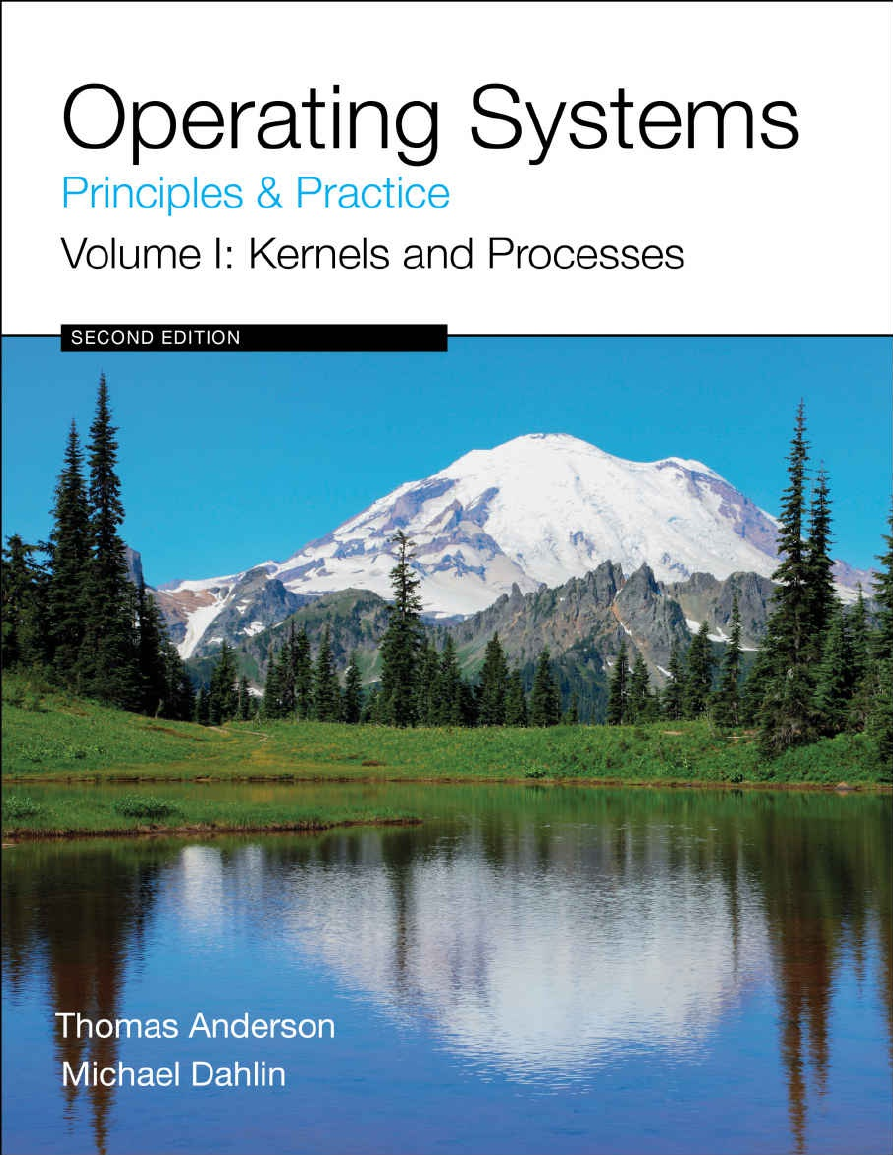
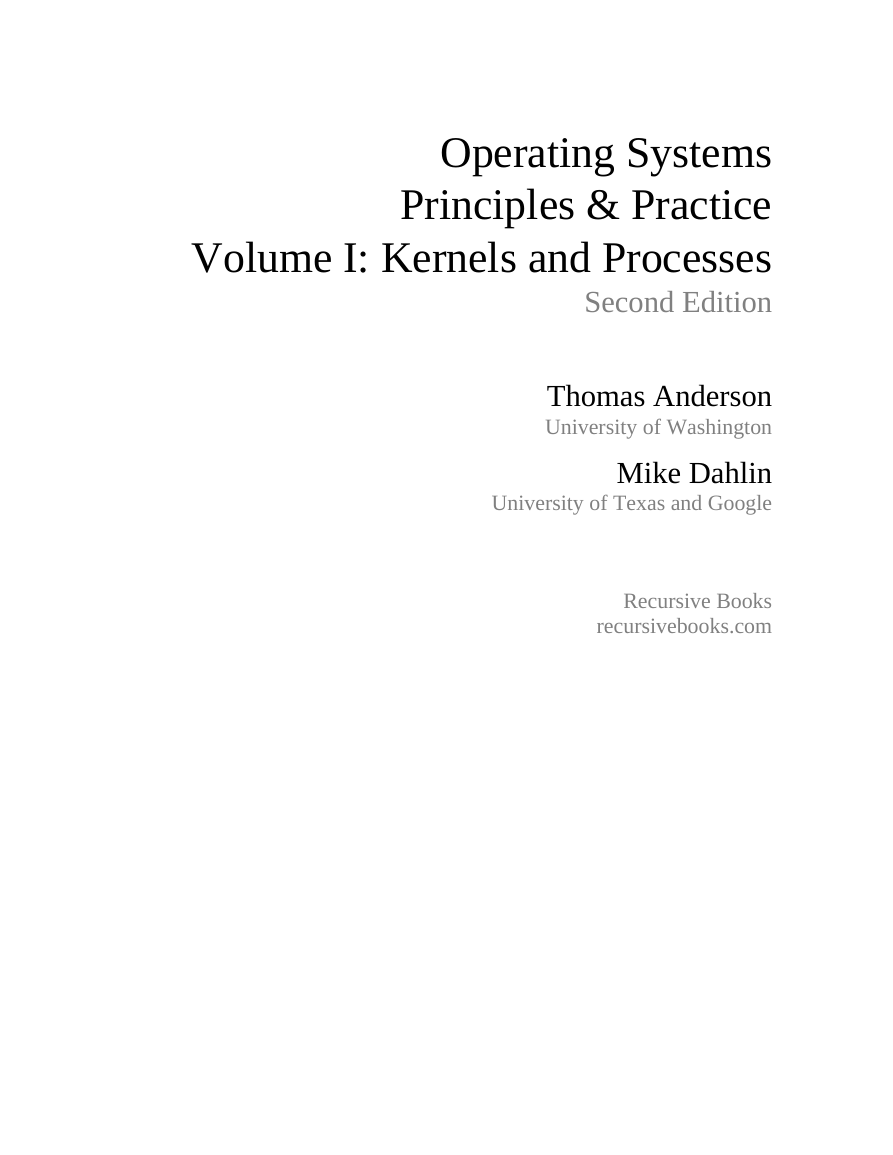
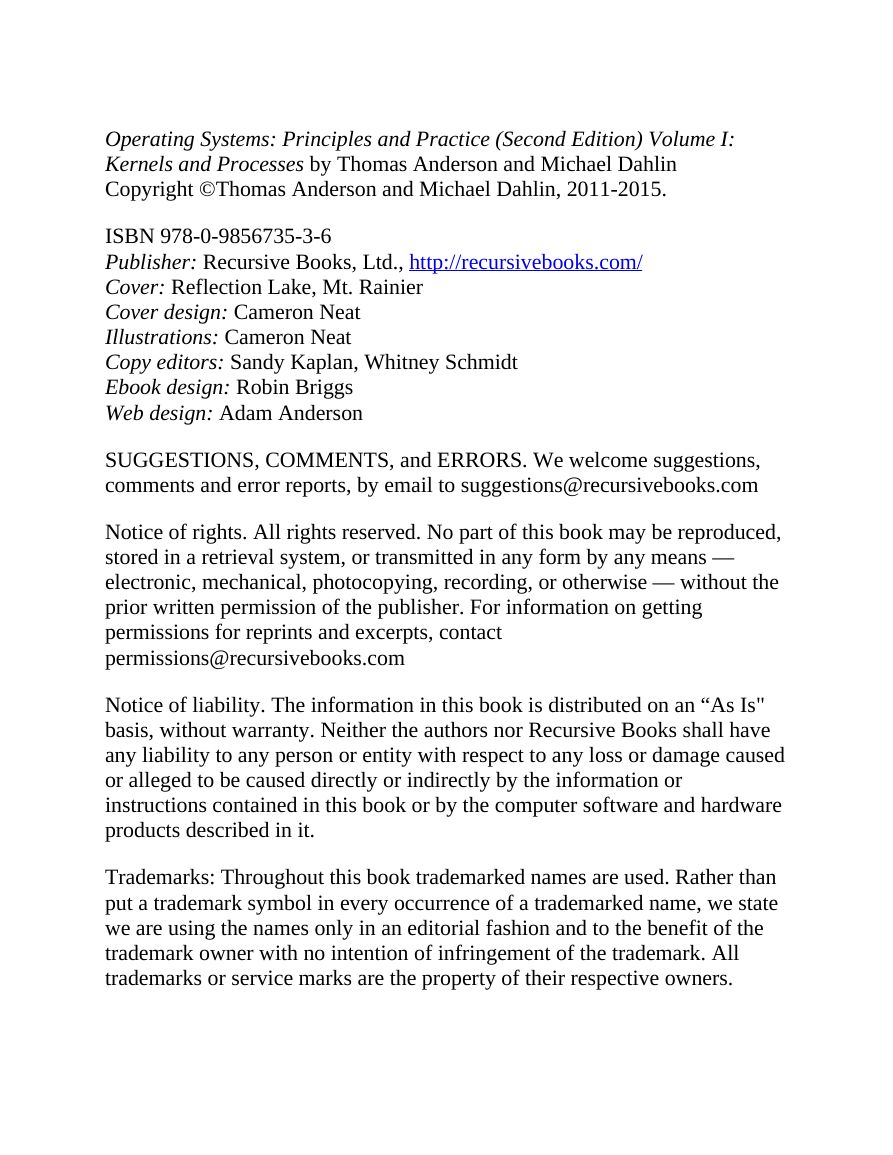

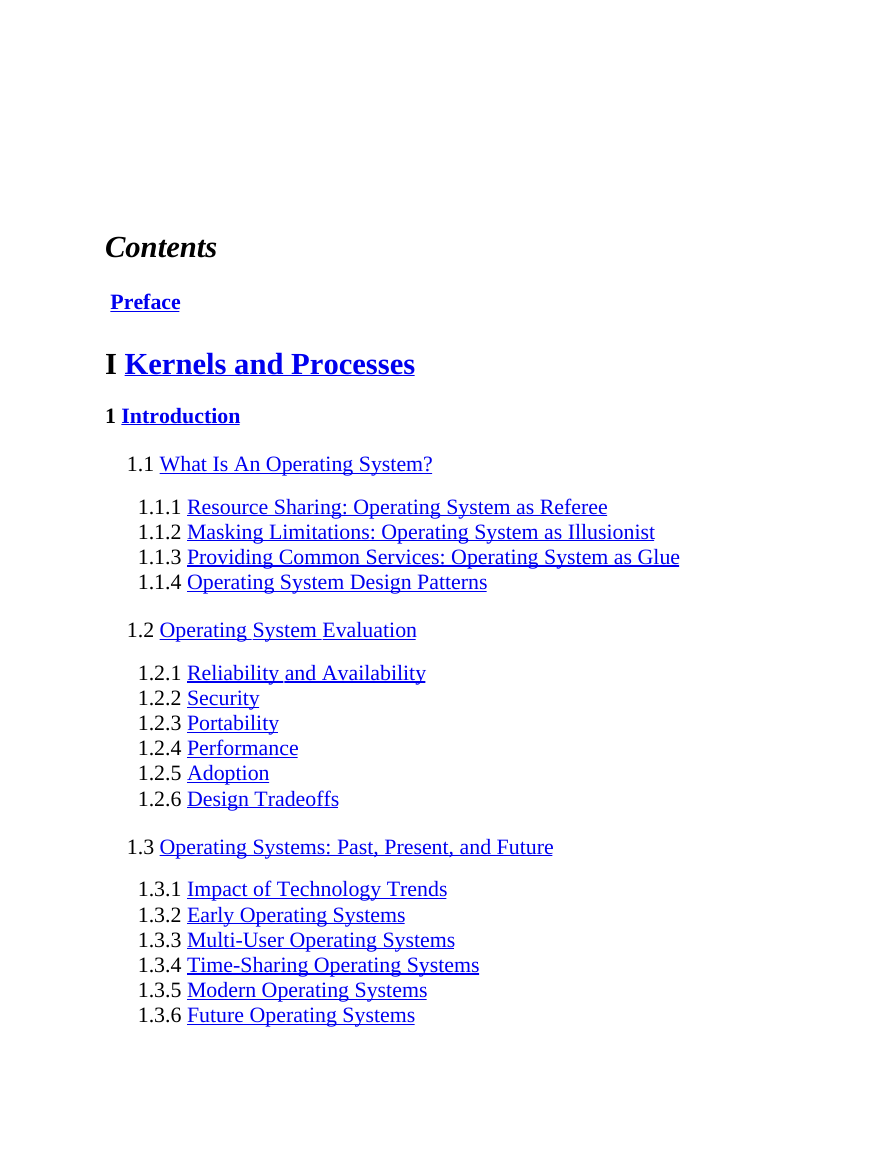
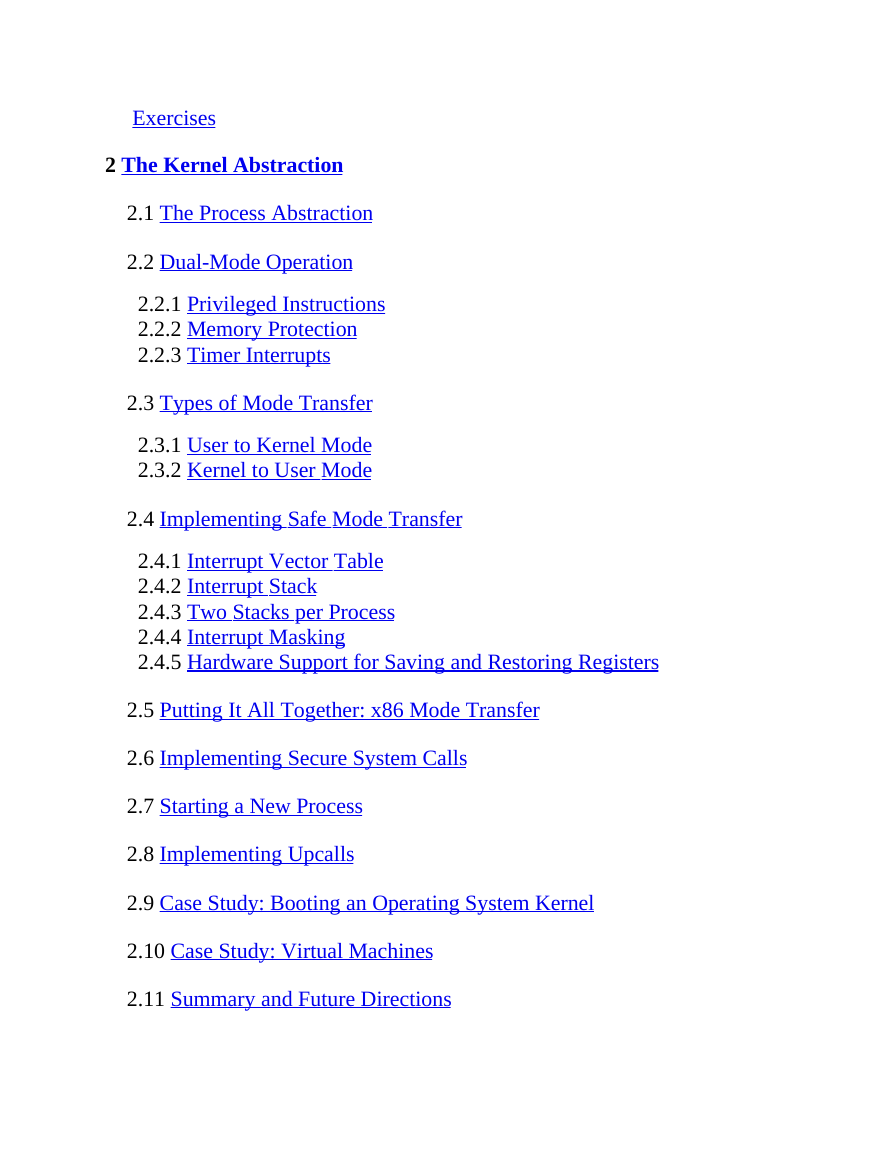
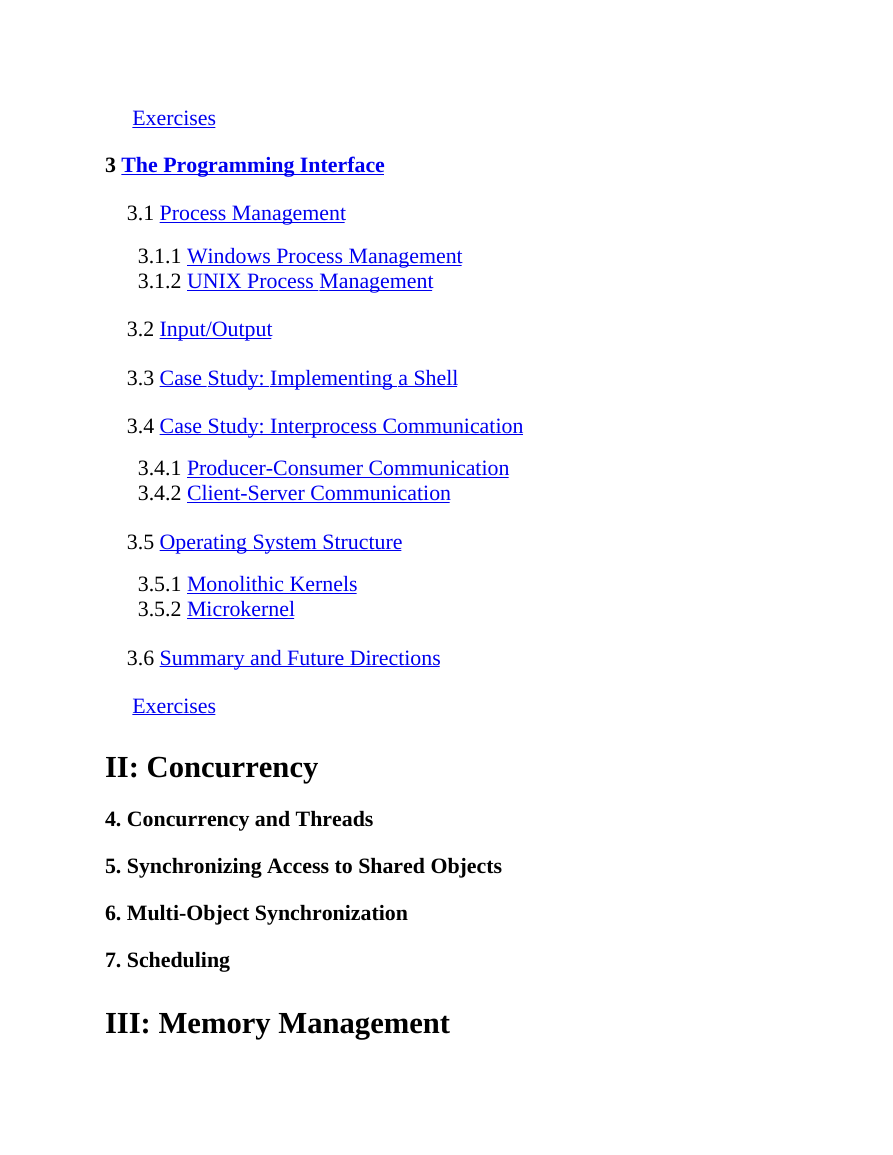
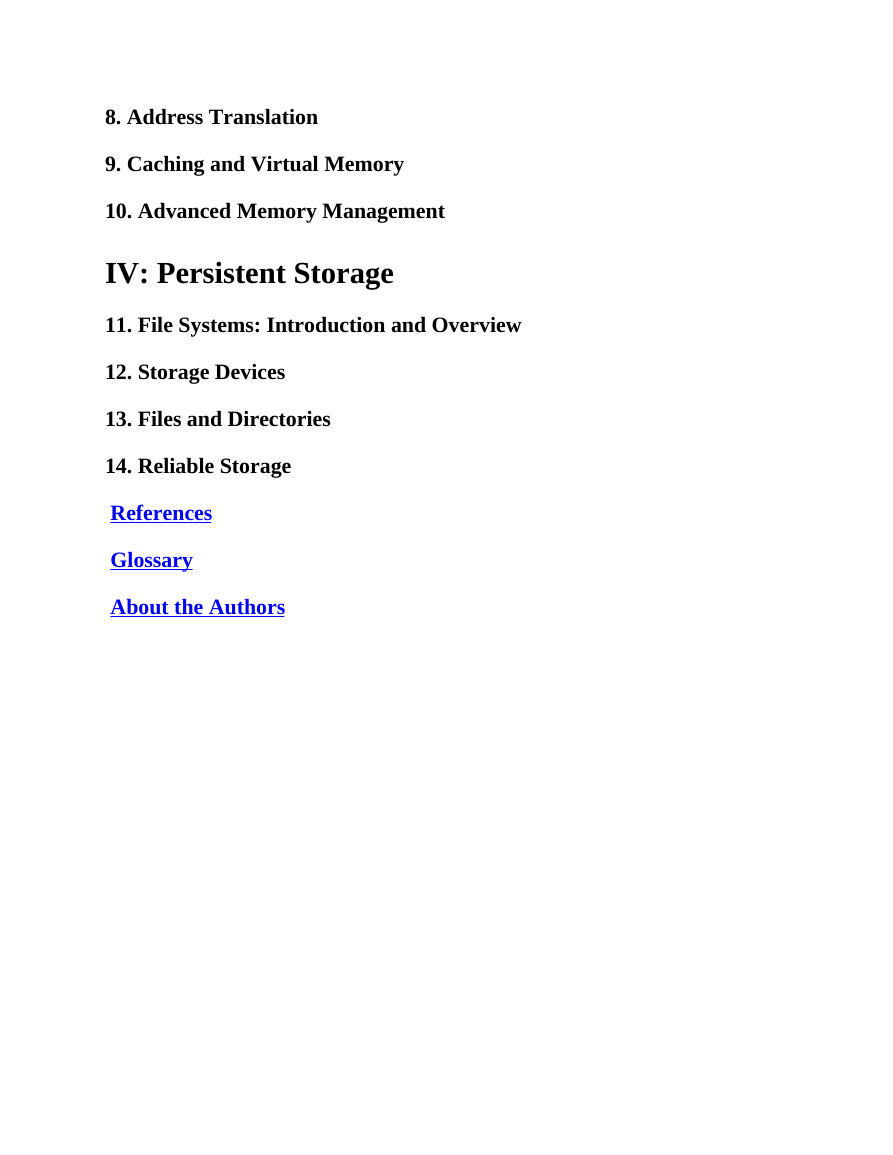








 2023年江西萍乡中考道德与法治真题及答案.doc
2023年江西萍乡中考道德与法治真题及答案.doc 2012年重庆南川中考生物真题及答案.doc
2012年重庆南川中考生物真题及答案.doc 2013年江西师范大学地理学综合及文艺理论基础考研真题.doc
2013年江西师范大学地理学综合及文艺理论基础考研真题.doc 2020年四川甘孜小升初语文真题及答案I卷.doc
2020年四川甘孜小升初语文真题及答案I卷.doc 2020年注册岩土工程师专业基础考试真题及答案.doc
2020年注册岩土工程师专业基础考试真题及答案.doc 2023-2024学年福建省厦门市九年级上学期数学月考试题及答案.doc
2023-2024学年福建省厦门市九年级上学期数学月考试题及答案.doc 2021-2022学年辽宁省沈阳市大东区九年级上学期语文期末试题及答案.doc
2021-2022学年辽宁省沈阳市大东区九年级上学期语文期末试题及答案.doc 2022-2023学年北京东城区初三第一学期物理期末试卷及答案.doc
2022-2023学年北京东城区初三第一学期物理期末试卷及答案.doc 2018上半年江西教师资格初中地理学科知识与教学能力真题及答案.doc
2018上半年江西教师资格初中地理学科知识与教学能力真题及答案.doc 2012年河北国家公务员申论考试真题及答案-省级.doc
2012年河北国家公务员申论考试真题及答案-省级.doc 2020-2021学年江苏省扬州市江都区邵樊片九年级上学期数学第一次质量检测试题及答案.doc
2020-2021学年江苏省扬州市江都区邵樊片九年级上学期数学第一次质量检测试题及答案.doc 2022下半年黑龙江教师资格证中学综合素质真题及答案.doc
2022下半年黑龙江教师资格证中学综合素质真题及答案.doc